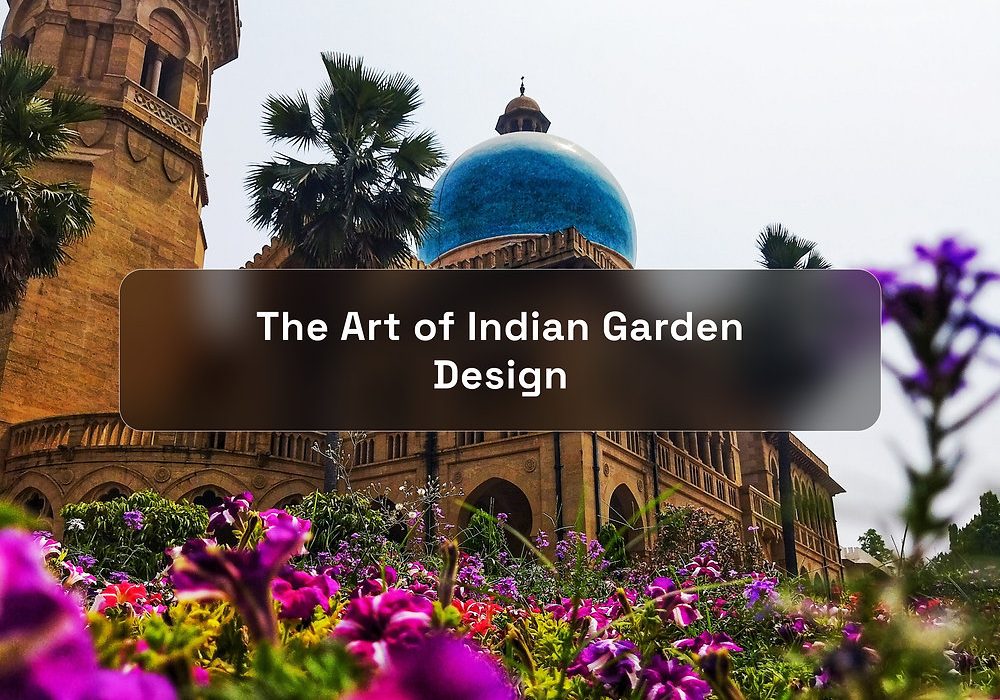The Role of Traditional Indian Gardens in Architecture

The Role of Traditional Indian Gardens in Architecture
Traditional Indian gardens have been an integral part of the country’s architecture, offering a fusion of beauty, symbolism, and functionality. These gardens are not merely aesthetic spaces but reflect deep cultural, religious, and philosophical ideas that have shaped Indian society for centuries. From the opulent Mughal gardens to the serene temple gardens, the role of these gardens in Indian architecture is both profound and significant.
The Evolution of Indian Gardens
The history of Indian gardens can be traced back to ancient times, with early references found in texts such as the Rigveda, where gardens are described as places of spiritual and physical rejuvenation. The designs of these gardens evolved over time, influenced by various dynasties, including the Mauryas, Guptas, and later the Mughals. The concept of a garden as a microcosm of the universe became prominent during the Mughal era, with gardens serving not only as places of leisure but also as symbols of paradise.
Mughal Gardens: A Symbol of Paradise
Mughal gardens are perhaps the most iconic traditional Indian gardens, characterized by their elaborate designs and use of water. The layout of Mughal gardens follows a Persian model known as the “charbagh,” or fourfold garden, which divides the space into four quadrants, symbolizing the Garden of Paradise. These gardens are carefully planned, with water channels, fountains, and geometrically arranged plantings, creating a sense of harmony and balance. Notable examples of Mughal gardens include the Shalimar Bagh in Srinagar and the gardens at the Taj Mahal.
The Mughal gardens were a synthesis of Persian, Islamic, and Indian design elements, incorporating local plants and elements while adhering to the Islamic principle of symmetry and balance. These gardens served as retreats for the royalty and the elite, offering a space for relaxation, reflection, and pleasure.
Temple Gardens and Sacred Spaces
In addition to Mughal gardens, temple gardens hold great importance in Indian architectural tradition. These gardens were often designed to provide a serene environment for worshippers and priests, fostering a spiritual connection between nature and the divine. Temple gardens were typically planted with sacred trees such as banyan, peepal, and neem, each holding religious significance.
In many cases, temple gardens were integrated into the design of the temple complex itself. The greenery and natural surroundings created a tranquil atmosphere, conducive to meditation and prayer. The use of gardens in temples underscores the belief that nature and spirituality are intertwined, with the garden serving as a reflection of the divine order of the universe.
Rajput Gardens: A Blend of Art and Nature
Rajput gardens, which emerged during the reign of the Rajput rulers, feature a distinctive style that blends Indian and Mughal influences. These gardens often incorporated elements such as pavilions, water features, and ornamental plants, but with a unique regional touch. Rajput gardens are known for their use of terraces, pools, and fountains, creating a dynamic interplay of water and architecture.
The gardens at Rajasthan’s Udaipur, including the famous Saheliyon-ki-Bari, exemplify the Rajput style of garden design. These gardens were not only places for royal leisure but also served as representations of the kingdom’s prosperity and artistic taste.
Symbolism and Philosophy in Garden Design
Traditional Indian gardens were more than just ornamental spaces; they were designed with deep symbolism and philosophical meaning. Many gardens incorporated the principles of Vastu Shastra, the ancient Indian science of architecture and spatial arrangement. The careful placement of plants, trees, and water elements was believed to create a harmonious environment that reflected cosmic order.
Water, in particular, played a significant role in Indian gardens, symbolizing life, purity, and renewal. The presence of water bodies such as ponds, fountains, and canals was considered essential for the balance of energy within the space, contributing to the overall aesthetic and spiritual atmosphere of the garden.
The Legacy of Traditional Gardens in Modern Architecture
The influence of traditional Indian gardens continues to be felt in contemporary landscape design and architecture. Elements such as symmetry, water features, and the use of plants with symbolic meanings are still prevalent in modern Indian gardens. In recent years, there has been a growing movement to preserve and revitalize traditional garden designs, ensuring that their cultural and architectural legacy endures for future generations.
Traditional Indian gardens, with their intricate designs and deep-rooted symbolism, remain a testament to the country’s rich cultural heritage. They offer not only a glimpse into India’s architectural history but also provide a space for reflection, tranquility, and a deeper connection to nature.
Conclusion
Traditional Indian gardens have played a vital role in the evolution of Indian architecture, offering a harmonious blend of nature, art, and spirituality. From the grand Mughal gardens to the serene temple gardens and the artistic Rajput gardens, these spaces reflect the deep cultural and philosophical beliefs that have shaped India’s architectural landscape. As the country continues to grow, the legacy of these gardens will remain an important part of India’s architectural identity, inspiring future generations to embrace the beauty of nature and the wisdom of the past.










